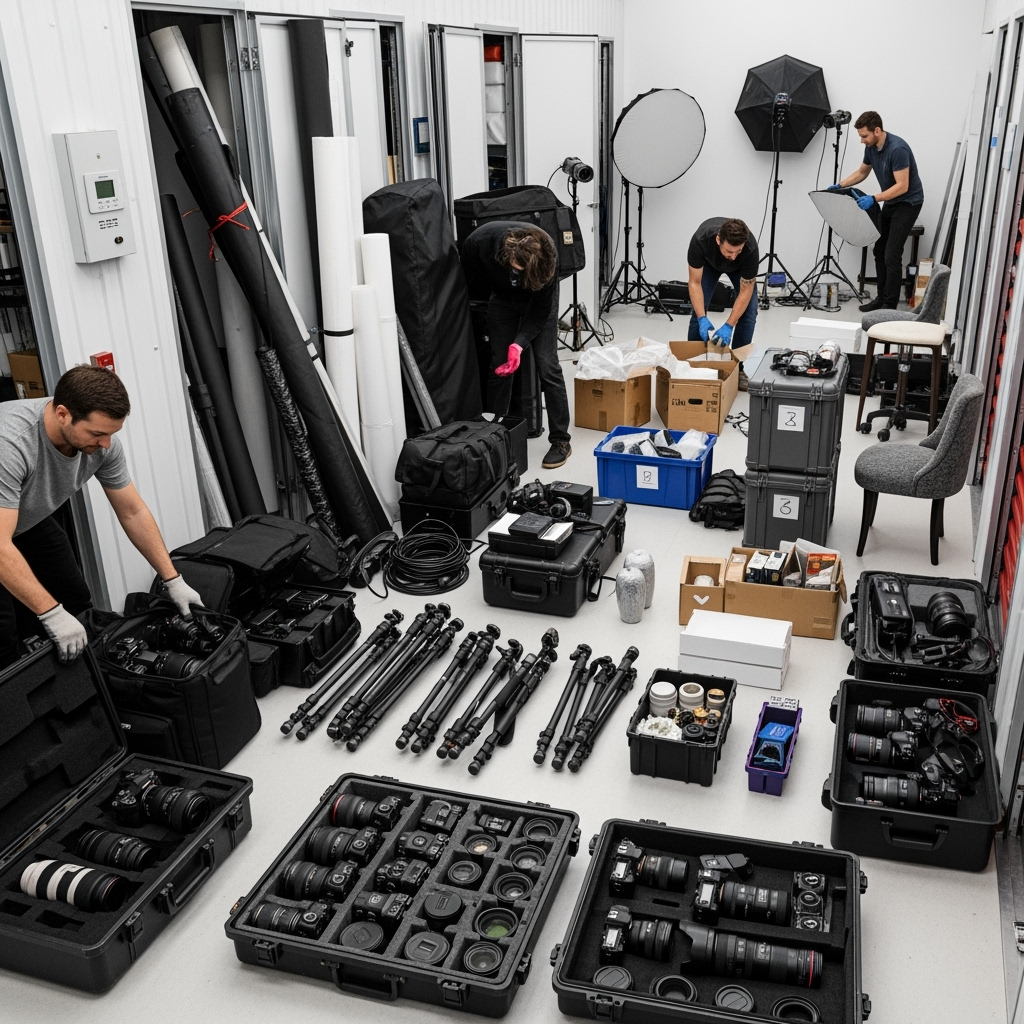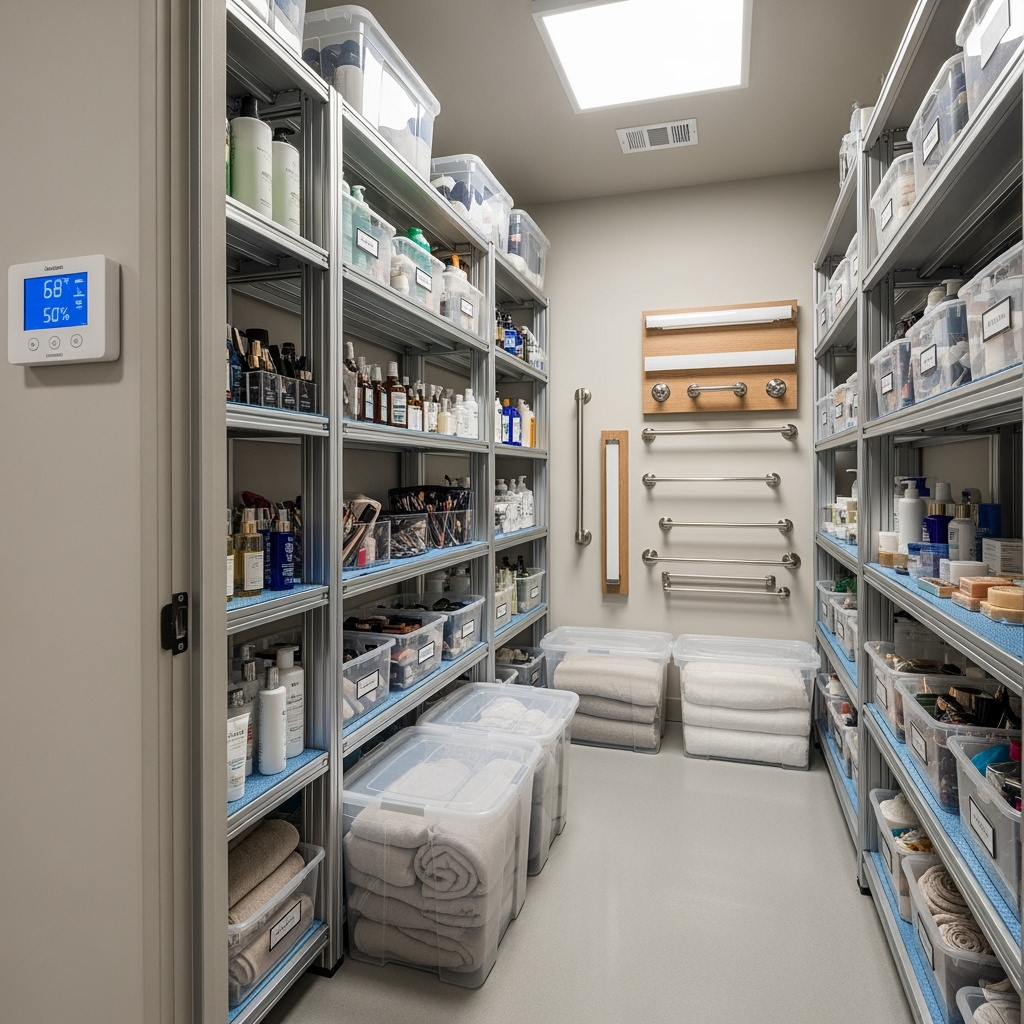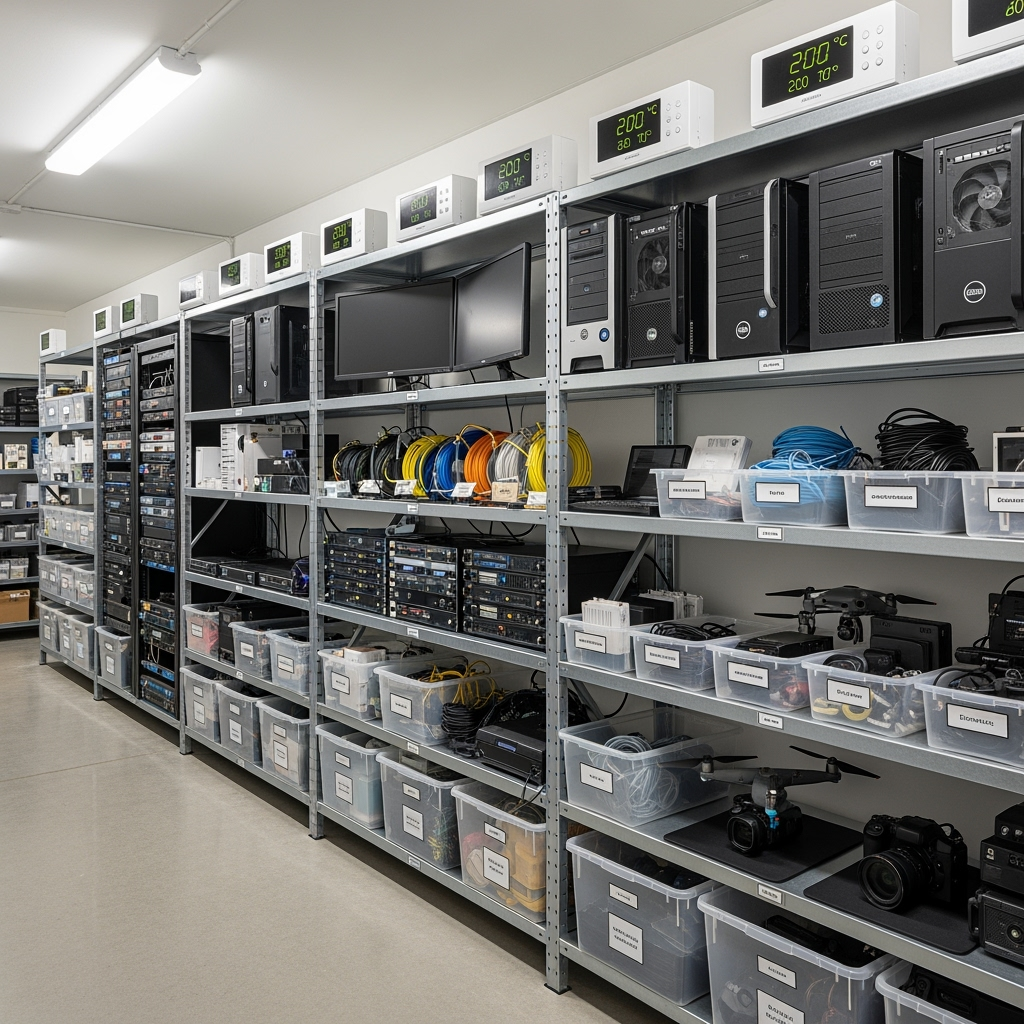Why Climate-Controlled Storage is Essential for Natural Craft Supplies
For eco-conscious crafters and DIY enthusiasts working with natural materials, proper storage is crucial for maintaining the quality and longevity of your supplies. Natural fibers, organic dyes, and raw materials require specific environmental conditions to prevent degradation, mold growth, and color fading. This comprehensive guide will help you protect your investment in sustainable crafting materials.
Temperature and Humidity Considerations for Natural Materials
Different natural materials have varying storage requirements, but most benefit from consistent temperature and humidity levels. Climate-controlled storage helps maintain:
- Wool and natural fibers: 60-65°F with 45-50% humidity
- Plant-based dyes: Cool, dark conditions to prevent color degradation
- Dried flowers and botanicals: Low humidity to prevent mold
- Natural adhesives and finishes: Stable temperatures to maintain consistency
Organizing Your Natural Craft Supply Storage Space
An organized storage system helps protect your materials while keeping them easily accessible. Consider these strategies:
- Use breathable containers for natural fibers
- Store light-sensitive materials in opaque containers
- Implement a rotation system for seasonal materials
- Label everything clearly with content and date
Protecting Against Common Threats
Natural materials face unique challenges in storage. Here’s how to address them:
- Moisture control using silica gel packets
- Natural pest deterrents like cedar blocks
- UV protection for light-sensitive materials
- Air circulation to prevent stagnant conditions
Special Considerations for Specific Materials
Different natural materials require specific storage approaches:
Natural Fibers
Store wool, cotton, and other natural fibers away from direct sunlight in acid-free containers. Add cedar blocks or lavender sachets for natural moth protection.
Natural Dyes
Keep natural dyes in airtight, dark containers. Store powdered dyes separately from liquid dyes and label with date of creation.
Dried Materials
Store dried flowers, leaves, and other botanicals in moisture-free environments. Use desiccant packets to maintain optimal dryness.
Long-term Storage Solutions
For materials you won’t use immediately, consider these long-term storage tips:
- Rotate stored items every few months
- Check regularly for signs of deterioration
- Document storage conditions and dates
- Maintain proper ventilation
Creating a Sustainable Storage System
Implement these eco-friendly storage practices:
- Use recycled or biodegradable storage containers
- Choose natural pest control methods
- Implement energy-efficient climate control
- Practice proper material rotation to minimize waste
When to Consider Professional Storage Solutions
Consider climate-controlled professional storage when:
- Your collection exceeds home storage capacity
- You need specific temperature and humidity controls
- You’re storing valuable or rare materials
- You require long-term storage solutions
Conclusion
Proper storage of natural craft supplies is essential for maintaining their quality and usability. By implementing these climate-controlled storage solutions, you can protect your investment in sustainable materials while supporting your eco-friendly crafting practice. Remember to regularly monitor your storage conditions and adjust as needed to ensure the longest possible life for your natural materials.










Leave a Reply